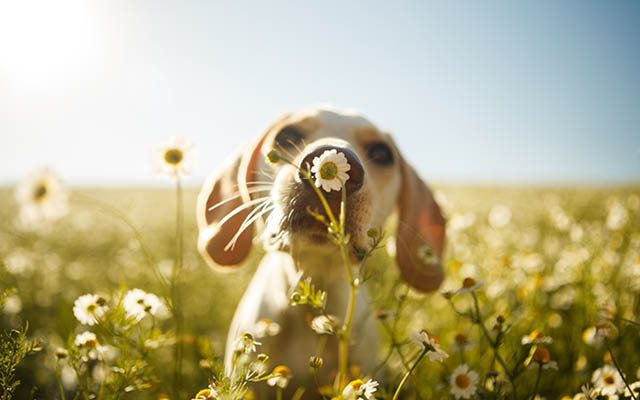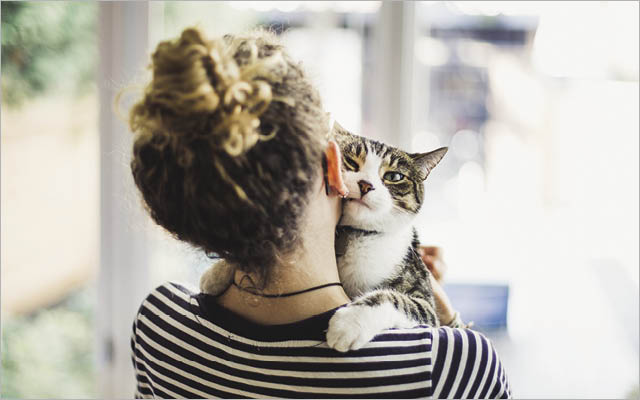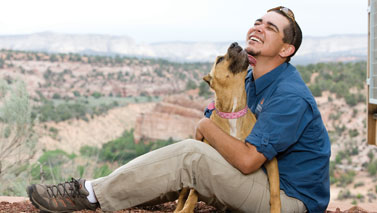Our pets are often like members of the family. They make our houses and apartments feel like home. They share affection with no strings attached, entertain us mightily, and provide us with daily opportunities to show love and care.
And when they die or disappear, they can break our hearts.
“If keeping a single memento, like a collar or a brush, helps you grieve, do that. Do whatever makes you feel better.”
Following the loss of a pet, we’re often blindsided by far more grief than we ever expected. We may wonder whether our sadness is normal — this isn’t a human being now gone from our lives, after all.
We may feel guilt, too, if we think we should have noticed our dog’s illness earlier or forbidden our cat to go outside. And we may worry that others won’t understand the depth of our sorrow, or that they’ll find it eccentric.
Psychologist Sandra Barker, an authority on human-animal relationships, encourages us to fully accept the strength of our bond with our pets, and to take the grieving process seriously.
Barriers to Overcome
- Minimizing the loss. “[Grieving] the loss of a pet varies according to how closely bonded you were with it,” says Barker, “but most pet owners are very bonded, and their grief is often similar to what they would feel at the loss of a human family member.” Trying to minimize your sorrow by thinking that “Fluffy was just a cat, after all” will only prolong your sadness, she says.
- Surprise. “Many people simply don’t realize how attached they were to a pet,” Barker says. “They think they’ll get over the loss quickly and easily but find themselves struggling with the surprising intensity and duration of their feelings.”
- Guilt. Given our pets’ dependence upon us, it’s natural, says Barker, to feel there must have been more we could have done to care for them. “But animals can’t often communicate with us in ways that would help us understand what is wrong with them and the best action to take.”
- Disoriented schedule. The tasks involved in taking care of a pet — especially one that’s old or ill —become a major part of our lives. “When we no longer have to feed the cat, walk the dog, clean the rabbit’s cage, or give medications,” says Barker, “it can open up a void in our schedules and our lives.”
- Loss of the animal’s emotional support. Since pets are typically faithful and supportive during tough emotional times, we may feel their absence especially acutely when we have to endure their loss without them.
- Loss of a pet’s role in your life history. “Our pets are present nearly all the time, day in and day out,” says Barker. “They remind us of many episodes in our lives — the good times and the difficult times — and when they’re gone, we may feel that unique and important parts of our lives have passed with them.”
Strategies for Recovery
- Allow for anticipatory grief. If your pet is old or ill, you and your family might begin the process of letting go by remembering joyful times and telling favorite stories, and devising a ceremony that expresses your love. You could take your animal to one of his or her favorite places and hold a ceremony there. (Here are some expert tips to help you make the most of the remaining days with your beloved pet.)
- Embrace the depth of the bond. Pets aren’t human beings, but our bond with them is a real and deep part of being human, says Barker. For example, you’re not a “crazy cat lady” simply because you are profoundly saddened by the loss of your cat.
- Accept the phases of grief. Barker emphasizes that most or all of the stages of grief outlined by Elisabeth Kübler-Ross in her groundbreaking book On Death and Dying — denial, anger, bargaining, depression, and acceptance — may be present after the death of a beloved pet. “I call them phases rather than stages of grief,” Barker explains, “because they can happen in any order and be repeated.”
- Get support. While more and more people today understand the depth of the bond between pets and owners, the connection still seems mysterious or trivial to some. Barker advises seeking support only from people who understand what you are going through.
- Realize you did your best. “If you are feeling guilt after the loss of a pet, thinking that you could have done more,” says Barker, “it’s important to take the long view of yourself as a pet owner. If you’re like most, you probably were dedicated and compassionate during the life of your pet. There was only so much you could have known, and you probably did the best you could with that knowledge.”
- Honor your pet in your own way. “In commemorating a pet that has died or disappeared, the most important thing is doing what brings you comfort,” says Barker. “If you would rather put away all mementos of the pet for a while and hold a small ceremony a few weeks later, do that. If keeping a single memento, like a collar or a brush, helps you grieve, do that. Do whatever makes you feel better.”
- Help children understand the loss. A pet’s departure can be a good opportunity to help kids begin to grasp loss or what death is. “A young child won’t get that the loss is permanent and that Kitty isn’t coming back,” Barker says, “so patiently explain that fact each time your child asks about it.” Giving children an active role in memorializing the pet will help them process the loss. “Kids are great at contributing drawings, poems, and songs to a family ceremony, and it really can help them with acceptance.”
- Avoid euphemisms. If your pet has died, you may be tempted to tell your children that Fido is “asleep.” “That runs the big risk of making your children afraid of falling asleep,” Barker says. “Tell them that their pet has died, and help them explore that reality.”
- Don’t rush to replace him or her. “Take some time when you start looking for a new pet,” Barker recommends. “Try to find one who will occupy a different place in your heart.”




This Post Has One Comment
I completely agree with what you have written. I hope this post could reach more people as this was truly an interesting post.